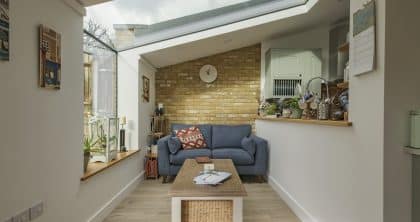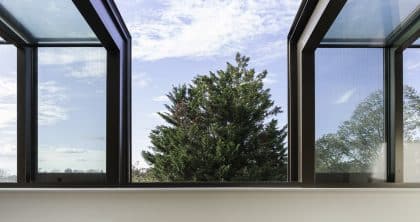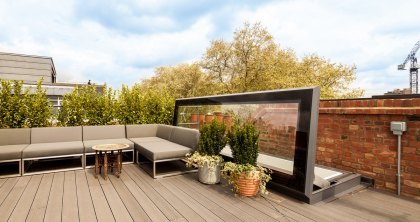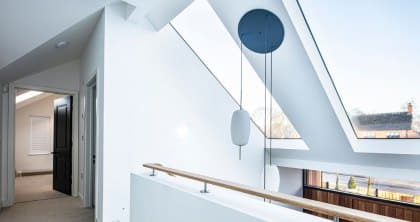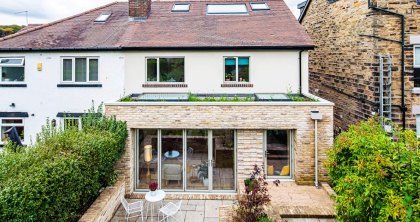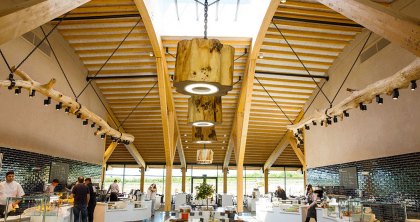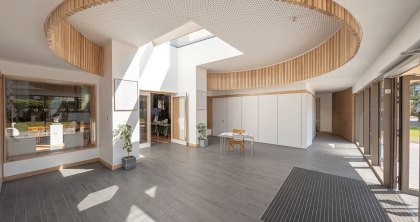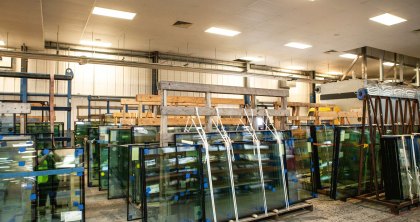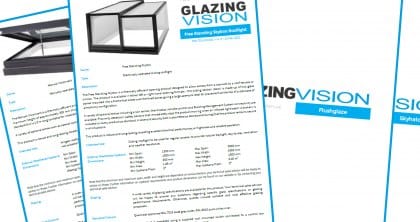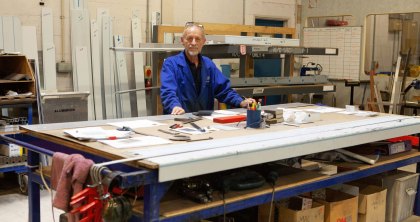Posted on March 4, 2019 in Blog
Utilising the potential of various coatings and glass types has other benefits. Compared to the total surface area of the building fabric, the heat loss through relatively small areas of roof glazing is more than offset by the contribution of solar gains and the reduced use of artificial lighting. Anybody involved with building design and specification should be aware of U-values as a measure of thermal transmittance (the movement of heat energy) through building fabric from warm to cold.
There is the potential for confusion around U-values for roof lights since, like g-values, it is common to see both whole unit and centre pane values used.
Beware of centre pane U-values
Centre pane U-values address the thermal performance of the glass only. They appear lower than whole-unit values because the cold bridging effect of the spacer and edge seal are not accounted for. Unfortunately, this means some manufacturers rely on quoting centre pane U-values when they should offer whole-unit U-values.
Specifiers can find themselves misled if a centre pane value is made to appear as though it is a better performing product – a tactic which is not in compliance with building regulations. However, centre pane values are useful for comparing one glass against another when being used in the same frame, as well as in conservation projects where traditional frame designs offer no meaningful thermal performance.
Low-e coatings impact on glass performance
In addition to treatments for solar control and reflectivity, there are also low emissivity (low-e) coatings that impact on the loss of heat from inside the building by reflecting long wave radiation back in.
A material’s emissivity determines the amount of thermal radiation emitted from its surface. Low-e surfaces emit less thermal radiation, and glazing units benefit from this through the application of a microscopic coating of tin, silver or zinc to certain faces of the glass panes in the unit.
In contrast to the short wave radiation from the sun that heats the building interior, the heat energy transferring back through the building fabric, from warm inside to cold outside, is long wave radiation. Glass with the low-e coating reflects long wave radiation, effectively keeping more heat energy in the building.
What are ‘hard’ and ‘soft’ coatings?
There are two types of coating: hard and soft. Hard coat is applied while the glass is still molten, whereas soft coat is applied later in the process. Hard coat is more durable, as its name suggests. Soft coat remains delicate, is only applied to the sides of panes facing into a sealed airspace, and has a lower emissivity than hard coat.
The difference in emissivity between the two means argon filled glazing with a hard coat treatment will typically offer a centre pane U-value of 1.4 W/m²K, while a soft coat treatment will see that improved to 1.1 W/m²K. It’s a meaningful distinction, yet some manufacturers will simply claim their glazing to be “low-e”. Making a hard coat treatment sound like a similar benefit to soft coat is another reason for specifiers to be clear about the features of the products they’re selecting.
Selecting glass that provides high light transmittance, effective solar control and excellent thermal performance is the holy grail. The term selectivity is used to describe this balanced combination of performance characteristics, where a higher selectivity is seen as the optimum combination.
For more information about the design, specification and u-values of glass, download our guide to specifying glass in rooflights whitepaper.

